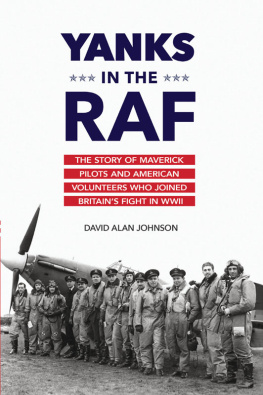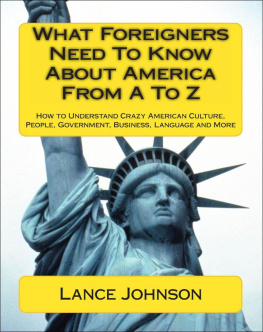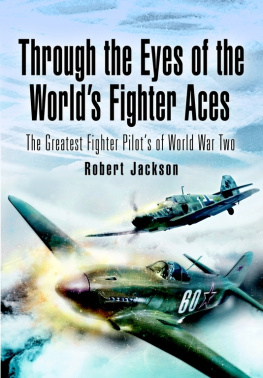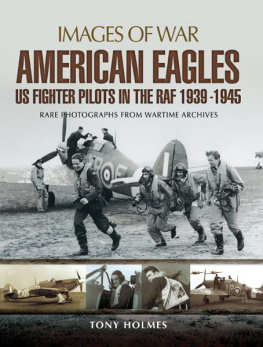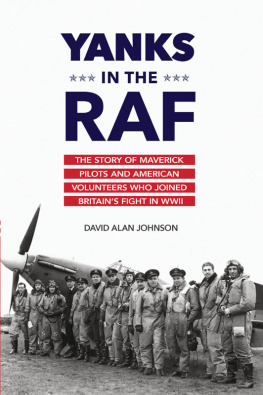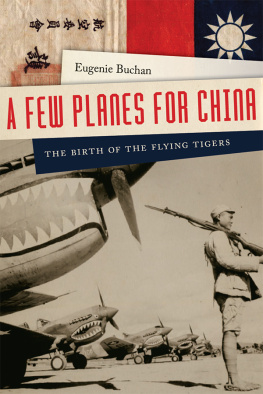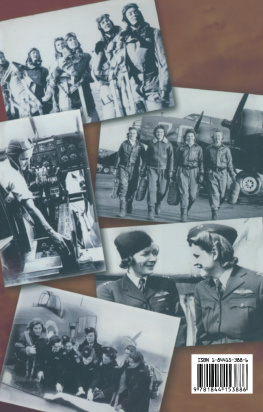ALSO BY DAVID ALAN JOHNSON
Decided on the Battlefield

Published 2015 by Prometheus Books
Yanks in the RAF: The Story of Maverick Pilots and American Volunteers Who Joined Britain's Fight in WWII. Copyright 2015 by David Alan Johnson. All rights reserved. No part of this publication may be reproduced, stored in a retrieval system, or transmitted in any form or by any means, digital, electronic, mechanical, photocopying, recording, or otherwise, or conveyed via the Internet or a website without prior written permission of the publisher, except in the case of brief quotations embodied in critical articles and reviews.
Prometheus Books recognizes the following registered trademarks, trademarks, and service marks mentioned within the text: Plexiglas, National Museum of the United States Air Force
Every attempt has been made to trace accurate ownership of copyrighted material in this book.
Errors and omissions will be corrected in subsequent editions, provided that notification is sent to the publisher.
Cover design by Jacqueline Nasso Cooke
Cover image: Pilots of 71 Squadron, the first all-American unit in RAF history, in front of a Hurricane Mark II in 1941. Andy Mamedoff, fifth from left, beside Eugene Tobin, sixth from left.
Inquiries should be addressed to
Prometheus Books
59 John Glenn Drive
Amherst, New York 14228
VOICE: 7166910133
FAX: 7166910137
WWW.PROMETHEUSBOOKS.COM
19 18 17 16 15 5 4 3 2 1
The Library of Congress has cataloged the printed edition as follows:
Johnson, David, 1950
Yanks in the RAF : the story of maverick pilots and American volunteers who joined Britain's fight in WWII / David Alan Johnson.
pages cm
Includes bibliographical references and index.
ISBN 978-1-63388-022-1 (hardback) -- ISBN 978-1-63388-023-8 (e-book) 1. World War, 1939-1945--Aerial operations, British. 2. Great Britain. Royal Air Force--History--World War, 1939-1945. 3. Great Britain. Royal Air Force. Eagle Squadron--History. 4. Fighter pilots--United States--History--20th century. 5. Americans--Great Britain--History--20th century. 6. Fighter pilots--Great Britain--History--20th century. 7. Great Britain--Relations--United States. 8. United States--Relations--Great Britain. I. Title. II. Title: Yanks in the Royal Air Force.
D786.J594 2015
940.54'4941092313--dc23
2015000803
Printed in the United States of America



It seems strange that Britain and the United States were once the friendliest of enemies, but the two countries were antagonists, not allies, for over one hundred years after the American colonies won their independence. After the War of Independence ended in 1783, the two countries fought each other again in 1812 and very nearly went to war in 1861 during the American Civil War. In the half century between the Civil War and the First World War, Britain and the United States did their best to ignore each other. Both the Grand Alliance and the Special Relationship are fairly recent developments.
During the years between the two world wars, and in the early part of the Second World War, Britain and the United States did not have very much use for each other. The British tended to regard the United States as a former colony that had overextended itself, a gangling adolescent of a country that was muscle-bound and brainless and should not be trusted too far. Prime Minister Neville Chamberlain famously declared that the Americans should not be counted upon for anything except talk.
American notions of the British were just as uncomplimentary. Most images of Britain were based upon incidents from American history when the two countries were at war with each other: Bunker Hill, the Boston Tea Party, and the burning of Washington, DC, in 1814. Britain was the traditional enemy of the United States, its ancient foe.
Relations between the two countries were so strained and difficult in 1940 that American volunteers for Britain's Royal Air Force had to sneak across the Canadian border to reach Englandit was against the law, actually a violation of the US Neutrality Acts, for an American citizen to join the armed forces of a belligerent nation, including Britain.
Americans thought they had been taken advantage ofplayed for suckersduring the First World War by the devious British. Britain had never repaid its war debt of several billion dollars, the thinking went, and should not be trusted. The United States had no intention of helping the British ever againand that included allowing American volunteers to join the British air force.
Within a few years, over two million Americans would be stationed in the British Isles as part of the buildup for D-Day, and the United States and Britain had formed two-thirds of what Winston Churchill called the Grand Alliance (the Soviet Union was the third ally). After the war, this alliance would evolve into the Special Relationship.
Since the Second World War, the Special Relationship has been strengthened by a good many items and events, including increased military cooperation and trade ties between Britain and the United States over the years, along with films, television programs, and cheap flights across the Atlantic. But it began with the volunteers who secretly made their way to England in 1939 and 1940. The Eagle Squadrons received most of the publicityas glamour-boy fighter pilotsbut Americans were scattered throughout the RAF. These volunteers brought the first taste of American egalitarianism, materialism, and Yankee get-up-and-go to the British Isles.
is a listing of the pilots who served with the three Eagle Squadrons. An alarming percentage of these volunteers were killed on active service with the Royal Air Force, including Red Tobin, Shorty Keough, and Andy Mamedoff, the original three members of the first Eagle Squadron. These Americans may have gone to England looking for romance and adventure, but instead found the reality of war.
gives the equivalent ranks of the USAAF and the RAF. The Eagle Squadron pilots probably wished they had this appendix in 1942, when they transferred from the British to the American forces. Most of the Eagles had no idea of American rank; it is hoped that this appendix will help the reader to avoid this problem.
The GIs in their multitudes began pushing life in Britain from a class-bound society toward meritocracy between 1942 and 1945the British were quick to notice that American officers were men and women who were the best at their jobs, not the eldest sons from families that had the best political connections. (Although by 1942, many British officers were also being chosen on the basis of meritthere was simply a need for more officers than the old system could supply.)
But the Eagle Squadrons and their fellow Yank volunteers got to England first and began the transition before the GIs arrived. The change in attitude of the two countries toward each other, from friendly enemies to special allies, first began with the Yanks in the RAF.

Next page
